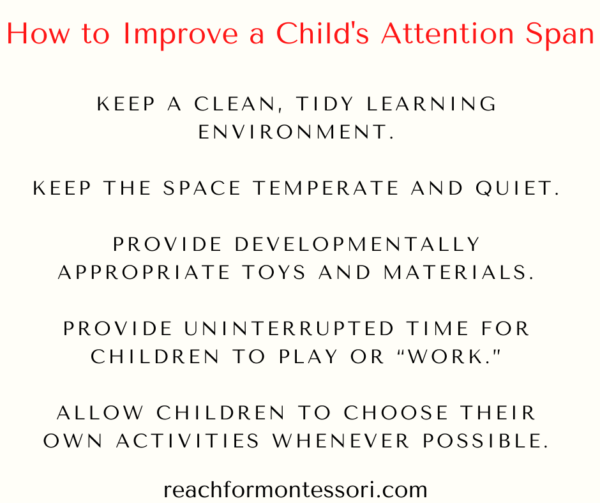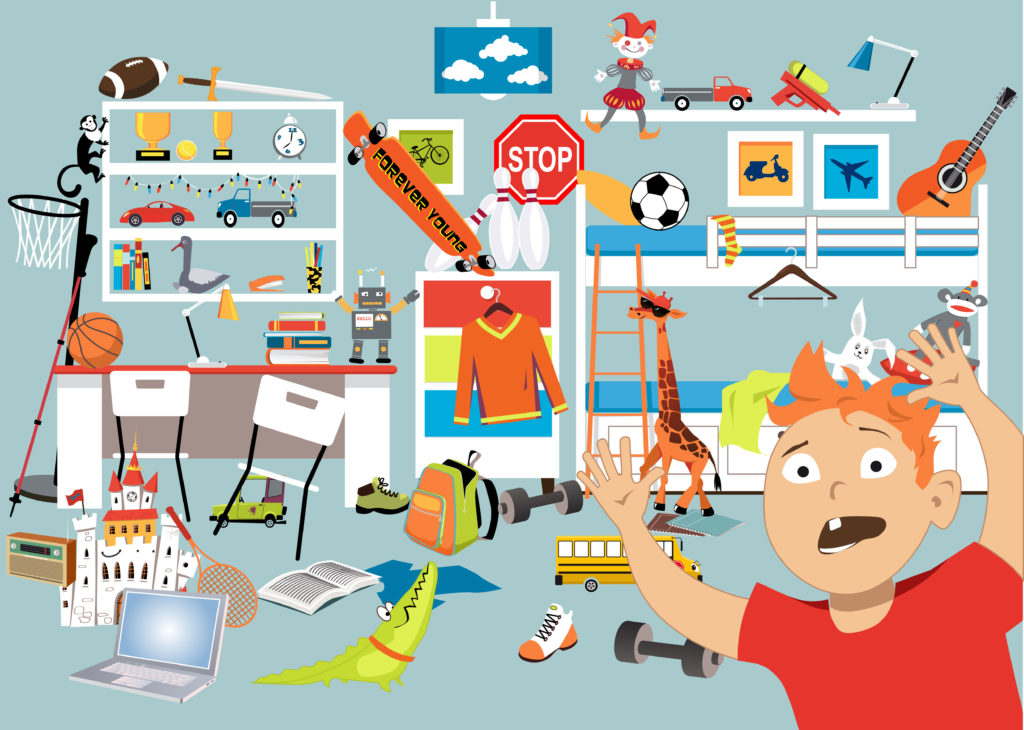The ability to focus one’s attention on a task for a sustained period of time is essential to learning and to life. In recent years, the issue of concentration and attention span in children has become a hot topic of conversation, and for good reason.
Diagnoses of ADHD have spiked in kids ages 4-17 and is now the most common behavior disorder among young people. Despite this nationwide crisis, the number of distractions our kids are juggling seems to multiply daily.
From TV to computer games and mobile apps at the ready, there’s less and less time for children to engage in good old- fashioned play.

Why Is Attention Span Important?
It is well known and understood that learning cannot take place without focus and concentration. In fact, little can be accomplished within a classroom or play/learning environment without it.
Reading, writing, arithmetic—even listening—require a child’s attention span to be in good working order. The need for focus and concentration is one of the few things in modern education that isn’t up for debate.
If we know how crucial it is, then why is attention span and lack of focus still such an epidemic in our schools and society?
Concentration Cannot Be Forced
In our increasingly hectic lives, we’ve become quite used to instant gratification. From on-demand television to quick-heat meals, there is little we have to wait for.
It sounds like a good thing, and it can be. Unfortunately, this ease of access to virtually anything we desire from entertainment to sustenance has made us all a bit impatient.
And it’s not just the children we’re really talking about here.
Teachers and parents have become all too comfortable with having things happen at their command. Want the lights on or the music to play? Just ask Alexa (or some other automated assistant).
Perhaps this level of immediate control over one’s environment has had some unintended consequences for the children in our care. Have we begun to expect an immediate response from our kids when we ask them to complete a task, or in this case, turn their attention to an activity?
One of the things Montessori herself recognized early in her teaching is that concentration is not something that can be forced. Focus cannot be turned on and off like a faucet.
Like so many other characteristics of learning for young children, attention is something that must occur naturally and authentically.

Concentration: A Muscle That Can Be Strengthened
Despite the fact that a child’s attention can’t be ignited at will, there is still a lot we can do to help strengthen a little one’s concentration muscle. Maria Montessori recommended observing the youngster and looking for signs that his or her attention has indeed been sparked:
We cannot take the child’s attention and carry it where we will, but we should observe where the child’s attention tends to go …” (Montessori’s 1913 Lecture in Rome)
By following the child’s attention, we can discover not only what attracts his or her interest, but also what the child needs to learn. Montessori believed that every child is born with an innate understanding of their developmental path and will be naturally drawn to experiences that further their learning and growth.
Once we understand this, we can better grasp our role as teachers and caregivers—that is, to respect the child’s inner knowledge of themselves and their learning needs and to help facilitate learning experiences according to his or her genuine interests.
The better we perform in this role, the more time and space the child will have to engage in activities that naturally peak his or her attention and incite that sustained focus that is so crucial to learning.

The Issue of Overstimulation
This isn’t earth-shattering information. Most parents and teachers realize that there are some things that attract a child’s attention while they find others less interesting.
That’s why from birth, we dangle toys and brightly-colored objects in front of babies, hoping to garner some of that precious attention we’ve been talking about! If we’re not careful, though, we can create a problem of overstimulation.
If you’ve ever been around a child who is overstimulated, you know this is not a good situation. Instead of sustained attention, an overstimulated youngster experiences restlessness, confusion, and even anxiety.
These are conditions that are counterproductive to learning and can create an uncomfortable environment for the child.
As we follow our children to the learning they so desperately crave and deserve, it’s our responsibility to eliminate any aspects of the environment that have the potential to overstimulate. This means keeping the learning space free of clutter, removing materials that aren’t in use, and being aware of environmental conditions like noise levels and temperature that could create discomfort or distraction.
Practical Tips to Increase Attention Span
To summarize, a child’s attention span is an important factor for learning, and it will continue to impact their performance and wellbeing for a lifetime. Focus is a tricky thing, though. It’s not entirely within our control.
However, it is something to be honored, and with the right tools and environment, it can be cultivated and strengthened over time. I will leave you with a few of my favorite tips for increasing attention span among little ones:
- Keep a clean, tidy learning environment.
- Keep the space temperate and quiet.
- Provide developmentally appropriate toys and materials.
- Provide uninterrupted time for children to play or “work.”
- Allow children to choose their own activities whenever possible.
Given the time and space to engage with their environment, children will impress you with their astounding ability to sustain attention for long periods of time.
Can Attention Span Be Increased?
As a final note, I would encourage you to respect your children’s choices when it comes to engaging with activities and resist the urge to interrupt them (even with praise!) When kids are fully immersed in learning, the very best thing you can do is stand back and observe, preferably with awe of the amazing things taking place in your classroom or home!
Cheers and don't forget to subscribe!
